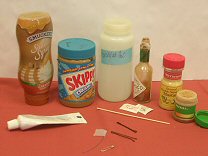
C. elegans is a free-living nematode. It is small—growing to about 1 mm in length—and lives in the soil (especially in rotting vegetation) where it survives by feeding on microbes such as bacteria. A great lesson to do following this one is C. elegans and Alcohol.
Students design, conduct, and analyze a controlled experiment testing the taste and/or smell preferences of the roundworm.
Another way to present this data is described in the lesson plan Open Inquiry using C. elegans.
This 9-minute video shows the life cycle and reproduction of C. elegans in graphical representations as well as footage of the worms under a microscope. The presentation is split into 6 sections and you can jump directly to the section you're interested in. C. elegans development and reproduction
For culturing C. elegans, see Laboratory 2 and 3 at Silencing Genomes.
C. elegans is the subject of an exciting Kickstarter-funded project to create an accurate, open-source digital clone that can be used in research. Read the May 24, 2014 article entitled Computer Worms in The Economist.
